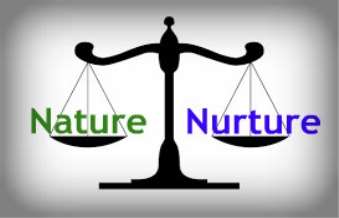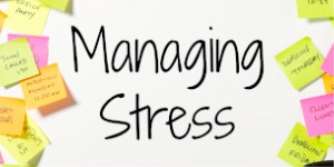Theories of Growth, Loss and Stress
| ✅ Paper Type: Free Essay | ✅ Subject: Social Work |
| ✅ Wordcount: 1282 words | ✅ Published: 07 Sep 2017 |

Theories are used to explain the characteristics and circumstances of individual. Theories look at human growth and development; managing loss and change; managing stress and behaviour
Psychoanalytical Theory
This approach looks at the underlying unconscious processes in individuals. Ideas developed by Sigmund Freud.
Sigmund Freud he stated the belief that the child is born with basic animal instincts that operate at the unconscious level of thought. These instincts require immediate gratification. Development depends in part on transforming these animal needs into socially acceptable, rational behaviour. The range of potential behaviour is very broad at birth and then becomes increasingly reduced in scope, fixed in form and shaped to conform to social norms (Boundless, 2017).
Erikson’s Psychosocial Theory
Erikson’s theory is based on the psychoanalytic approach to human development, founded by Sigmund Freud.
Erikson believed that the process of socializing the child into a given culture occurs as the person passes through eight innately determined, sequential stages. Although he recognized the individual’s instinctual drives, Erikson emphasized the child’s interaction with the environment (Erikson, 1959). For Erikson, the events of later childhood can undo the personality foundations built earlier in life (Boundless, 2017).

Behaviourist theory
This is used to describe human behaviour. The concept is that all human behaviour can be understood as a result of learning. There are two types of learning; Classical conditioning; inducing a natural reflex response to a stimulus and Operant conditioning: using reward and punishment to modify behaviour (McLeod, 2017). Behaviourism helps to modify behaviour by using operant conditioning. E.g. if a client does something wrong, they should be told of so that they do not repeat their wrong doings. At the same time we offer some rewards for good behaviour to reinforce those behaviours.
Humanistic Theory
 This theory tries to understand human development according to how the ‘self’ develops. Sense of self in terms of self-concepts, and self-esteem is developed right from childhood. Self-concept is about how we see ourselves.eg(female, tall, brown-eyed, skills and competences, being kind, shy outgoing, lively, thoughtful, honest etc., fire fighter, doctor, brother sister etc. Self-esteem refers to how we fell about ourselves. How much value we give to ourselves and how lovable and likeable we believe ourselves to be. The self-esteem can be shattered depending on how individuals are treated. If discriminated against, ridiculed, neglected criticised,
This theory tries to understand human development according to how the ‘self’ develops. Sense of self in terms of self-concepts, and self-esteem is developed right from childhood. Self-concept is about how we see ourselves.eg(female, tall, brown-eyed, skills and competences, being kind, shy outgoing, lively, thoughtful, honest etc., fire fighter, doctor, brother sister etc. Self-esteem refers to how we fell about ourselves. How much value we give to ourselves and how lovable and likeable we believe ourselves to be. The self-esteem can be shattered depending on how individuals are treated. If discriminated against, ridiculed, neglected criticised,
individuals will develop a low self-esteem (AQA,2017).
Nature
This account of behaviour and personality development focuses on what we are born with. This include characteristics like Left-handedness, intelligence, susceptibility to certain illnesses, temperament (shy, withdrawn, or outgoing and confident).
Nurture
Refers to all that happens within the environment. It involves the way someone is brought up and the way they are treated by parents, teachers and peers. All these influence behaviour and development and goes towards building a personality.
Piaget’s Cognitive-Developmental Theory
Cognitive theory: is involved with aspects on an individual’s cognitive processes that are involved with learning, thinking, knowing about, reflecting on, and understanding the world. It involves the study of our thinking, memory, intelligence, perception, problem solving and reasoning. Piaget described that in different stages of a person life they would develop skills in reasoning and comprehension. The stages he compiled are as follows (Learning-theories, 2017);
a. Sensorimotor development (0-2 years). As an infant the person exercises rudimentary sensory (seeing touch, hearing, tasting, smelling) and motor (kicking, punching, moving around, hitting objects) awareness and functions almost exclusively by means of reflexive responses. The child cannot think abstractly.
b. Preoperational thought (2-7 years). The person is now a child and demonstrates an increase in language abilities and concepts become more elaborate. However, the child can only view the world from its own perspective. Their intellectual state is immature.
c. Concrete operations (7-11 years). As an older child the ability to consider the viewpoints of others and understand relational concepts is evident. However, the child cannot will struggle to solve problems of an abstract nature (Learning-theories.com, 2017).
d. Formal operations (11-15). Now an adolescent the person is able to demonstrate abstract thinking and scientific problem-solving strategies emerge. This theory informs health and social care professionals to understand the level of thinking of individuals with learning difficulties who may have a lower mental age in relation to their physical aid. Appropriate communication techniques are required to reach out to them.

Managing loss and change
Change management is a basic skill in which most leaders and managers need to be competent. This theory looks at the basic principles of change management, and how to apply them People react differently to change when it occurs because of differences in our personality and our inner conflicts as proposed by Erikson in his theory of psychosocial development. Change often involves a loss, and people go through the “loss curve”. Expectations need to be managed realistically. Fears have to be dealt with by giving people honest information and also to be opened about the facts (North West NHS Academy, 2017). Avoid speculation and meet their unrealistic expectations. Major changes in our lives may have a positive impact depending on the ways of coping. On the other hand, major change in our lives can lead to stress and loss of self-confidence depending on our abilities to cope with them.
Managing stress and behaviour
From the biological point of view, stress causes the release of adrenalin and noradrenalin and cortisol (hormones). Adrenalin and noradrenalin make us feel agitated and uncomfortable, while prolonged secretion of cortisol is associated with depression. However 2 people can be exposed to the same stressful event and react differently. This can be explained by the cognitive approach. For example if a negative event happens, the stress response if mild for someone whose thoughts are along the lines of positive thinking. For example if they think it is an opportunity or a challenge, rather than a threat. The stress response will be severe for someone who thinks that ‘this is the end of the line’ (Schneiderman et Al, 2017).

Choice and Interaction
This focus on the belief that people can take control of their own lives base on the choices they make. Nonetheless, others believe that everything in life is fixed by nature and nurture. In most cases, people believe that human life course involves an interaction of nature, nurture and the decisions and choices we make. For instance, if performing prayers (5) times daily is part of your environment, your genes may make you urge to do your prayers. However your choice and interaction depends on your reaction (Pearson Education, 2017).
Health care professionals need to know these theories in order to understand different personalities and understanding of how individuals may react differently to life situations.
References
AQA. (2017). The Humanistic Approach | AQA B Psychology. [online] Available at: http://aqabpsychology.co.uk/2010/07/the-humanistic-approach/ [Accessed 4 Feb. 2017].
Boundless. (2017). Freudian Psychoanalytic Theory of Personality. [online] Available at: https://www.boundless.com/psychology/textbooks/boundless-psychology-textbook/personality-16/psychodynamic-perspectives-on-personality-77/freudian-psychoanalytic-theory-of-personality-304-12839/ [Accessed 4 Feb. 2017].
Development through the life stages. (2017). 1st ed. [ebook] London: Pearson Education. Available at: http://www.pearsonschoolsandfecolleges.co.uk/AssetsLibrary/SECTORS/Trade/Sample%20pages%20(for%20Ed%20Supplier%20sites)/Newsamplecontentfor2010/BTECNationalHealthandSocialCare-SampleStudentBookMaterial.pdf [Accessed 4 Feb. 2017].
Erikson, E. H. (1959) Identity and the Life Cycle. New York: International Universities Press.
Learning-theories.com. (2017). STAGE THEORY OF COGNITIVE DEVELOPMENT (PIAGET). [online] Available at: https://www.learning-theories.com/piagets-stage-theory-of-cognitive-development.html [Accessed 4 Feb. 2017].
Managing Change – Five Basic Principles. (2017). 1st ed. [ebook] NHS North West Leadership Academy. Available at: http://www.nwacademy.nhs.uk/sites/default/files/0f_1722011_managing_change_5_basic_principles.pdf [Accessed 4 Feb. 2017].
McLeod, S. (2017). Behaviorism | Simply Psychology. [online] Simplypsychology.org. Available at: http://www.simplypsychology.org/behaviorism.html [Accessed 4 Feb. 2017].
Schneiderman, N., Ironson, G. and D. Siegel, S. (2017). STRESS AND HEALTH: Psychological, Behavioral, and Biological Determinants. Annual Review of Clinical Psychology, 1, pp.607-628.
Cite This Work
To export a reference to this article please select a referencing stye below:
Related Services
View allDMCA / Removal Request
If you are the original writer of this essay and no longer wish to have your work published on UKEssays.com then please click the following link to email our support team:
Request essay removal


